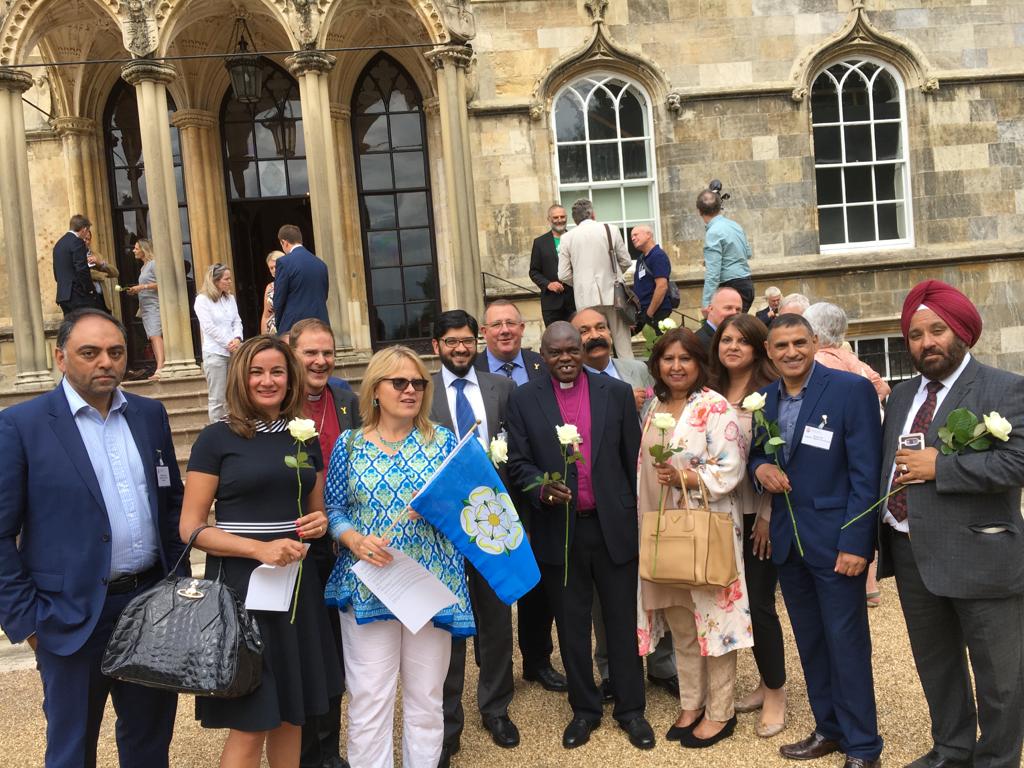
 Hello my name is Kersten.
Hello my name is Kersten.
This is the last leadership message I will write for our wider health and care system. Oh errr! And it has been the hardest to write. So much to say and so much ambivalence in me that it is the last. I’m in the throes of all those emotions so well described by Elisabeth Kubler-Ross as part of the cycle of grief and change.
It has been a privilege to work with you all, serving the people of West Yorkshire. And for 26 of my 33 years in public service I’ve sought to serve the people of West Yorkshire, starting first as a gender equality officer in Kirklees, having time as Director of Policy for Bradford and Director of Communities for Calderdale before returning to my home patch as Chief Executive of Bradford Council for the last eight years (after a six-year stint in York as CEO).
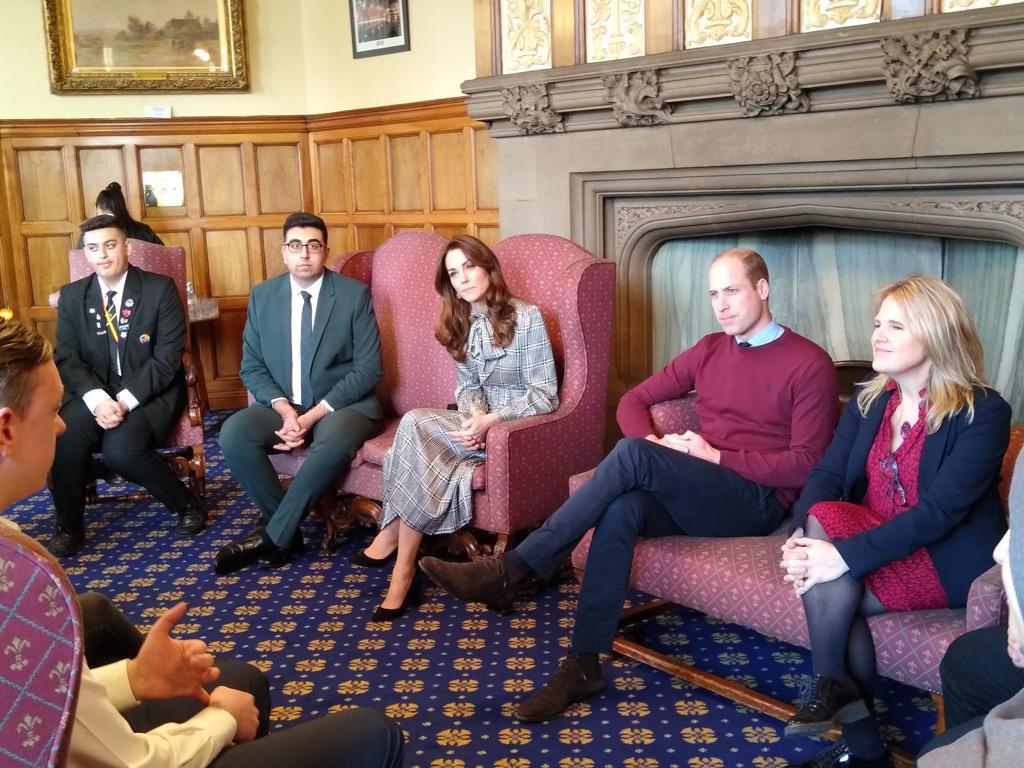 I am proud to have been part of the West Yorkshire Health and Care Partnership. I see all the challenges we face as health and care systems - both locally and nationally - of partnerships under pressure with surging levels of demand, workforce shortages and huge disparities in health outcomes which exacerbate the inequalities we sadly know still exist.
I am proud to have been part of the West Yorkshire Health and Care Partnership. I see all the challenges we face as health and care systems - both locally and nationally - of partnerships under pressure with surging levels of demand, workforce shortages and huge disparities in health outcomes which exacerbate the inequalities we sadly know still exist.
But I also see a team of over a hundred thousand people who are under no illusions about these challenges yet remain determined to tackle them and do everything in their power. As Stephen Covey would say to work ‘in their sphere of influence’ to make a difference and enable people to have good and healthier lives.
We are one of the most cohesive and mission focussed integrated care systems. It is not just me that says that. I hear it often from the wider health and local authority community. Part of the magic for me has been the organising principle around ‘primacy of place’ or subsidiarity as some call it. There are ‘five places’ in West Yorkshire (Bradford District and Craven, Calderdale, Kirklees, Leeds and Wakefield District). The recognition of the distinctiveness of place, and the fostering of great leadership in every part at every level of the system, has been so very important for us.
 Coming together for the stuff that we can do best together matters too. As well as all the very necessary collaboration on aspects of clinical delivery and investment in infrastructure etc we’ve done some great work through our Health Equities Fellowship, the Health Inequalities Academy and our award winning ‘Root Out Racism’ movement. But I also want to highlight the incredibly important work being done on adversity, trauma and resilience and to equip practitioners everywhere to understand and address the profound impact that the experience of adversity and trauma has on people’s health and well-being.
Coming together for the stuff that we can do best together matters too. As well as all the very necessary collaboration on aspects of clinical delivery and investment in infrastructure etc we’ve done some great work through our Health Equities Fellowship, the Health Inequalities Academy and our award winning ‘Root Out Racism’ movement. But I also want to highlight the incredibly important work being done on adversity, trauma and resilience and to equip practitioners everywhere to understand and address the profound impact that the experience of adversity and trauma has on people’s health and well-being.
Here in Bradford District and Craven we have been through a lot over the last eight years. Some six years ago in 2017 the Care Quality Commission did a whole system review. In their feedback they talked about a system in which outcomes for people seemed to matter most, institutional identities, labels, and hierarchies much less. But they also wondered whether we had the underpinning systems and processes to ensure these survived changes of personnel (workforce).
 People have come and gone, organisational structures and governance arrangements have changed, we have been through a pandemic, and the challenges we face have got tougher and more complex. As a system we have rightly faced intense scrutiny and challenge around our work for children. But that essence now captured in our ambition to ‘Act as One’ has persisted and with more systematic arrangements to make it so.
People have come and gone, organisational structures and governance arrangements have changed, we have been through a pandemic, and the challenges we face have got tougher and more complex. As a system we have rightly faced intense scrutiny and challenge around our work for children. But that essence now captured in our ambition to ‘Act as One’ has persisted and with more systematic arrangements to make it so.
One of the huge assets we have locally is the incredible connected data sets which give us deep insight into some of wider determinants of health. The use of data and insight can be seen in the flourishing childhood research through Born in Bradford and the amazing Bradford Institute for Health Research based at Bradford Teaching Hospital. We are tackling inequalities together head on by putting in place interventions together that seek to make a positive difference to people’s lives.

 Interventions such as ‘glasses for classes’ ensuring kids with eyesight issues get glasses after diagnosis so children can see to learn, early non-clinical identification of autism at foundation stage - allowing kids to achieve at the level of their peers, introduction of a clean air zone following powerful evidence around impact on foetal development. Other examples, include addressing childhood asthma and levels of COPD, with the full support of clinicians, academics, and citizen scientists. This has led to a rethink of our whole approach to neighbourhood design and planning guidance to enable wellbeing and the turning the dial.
Interventions such as ‘glasses for classes’ ensuring kids with eyesight issues get glasses after diagnosis so children can see to learn, early non-clinical identification of autism at foundation stage - allowing kids to achieve at the level of their peers, introduction of a clean air zone following powerful evidence around impact on foetal development. Other examples, include addressing childhood asthma and levels of COPD, with the full support of clinicians, academics, and citizen scientists. This has led to a rethink of our whole approach to neighbourhood design and planning guidance to enable wellbeing and the turning the dial.
There are loads of people I want to thank too many to mention here. But I do want to say a huge thank you to Helen Hirst, former Chief Officer of Bradford District and Craven Clinical Commissioning Group, who has been a constant and abiding influence on me. She gave me many gifts, of support, of wisdom, different ways of seeing and on occasion frank feedback. Helen has also shared Myron’s maxims with me, which I leave you with. They have served me well. Go well.
Myron’s Maxims
- People own what they help create
- Real Change happens in real work
- Those who do the work do the change
- Connect the system to more of itself
- Start anywhere follow everywhere
- The process you use to get to the future is the future you get.
Finally, for all my friends, colleagues, and communities celebrating Eid; Eid Mubarak! I hope you have a wonderful love and food filled time with family and loved ones.
Thank you for reading,
Kersten
 Eid al-Fitr
Eid al-Fitr


 Hello my name is Kersten.
Hello my name is Kersten. I am proud to have been part of the
I am proud to have been part of the  Coming together for the stuff that we can do best together matters too. As well as all the very necessary collaboration on aspects of clinical delivery and investment in infrastructure etc we’ve done some great work through our
Coming together for the stuff that we can do best together matters too. As well as all the very necessary collaboration on aspects of clinical delivery and investment in infrastructure etc we’ve done some great work through our  People have come and gone, organisational structures and governance arrangements have changed, we have been through a pandemic, and the challenges we face have got tougher and more complex. As a system we have rightly faced intense scrutiny and challenge around our work for children. But that essence now captured in our ambition to
People have come and gone, organisational structures and governance arrangements have changed, we have been through a pandemic, and the challenges we face have got tougher and more complex. As a system we have rightly faced intense scrutiny and challenge around our work for children. But that essence now captured in our ambition to 
 Interventions such as ‘glasses for classes’ ensuring kids with eyesight issues get glasses after diagnosis so children can see to learn, early non-clinical identification of autism at foundation stage - allowing kids to achieve at the level of their peers, introduction of a clean air zone following powerful evidence around impact on foetal development. Other examples, include addressing childhood asthma and levels of COPD, with the full support of clinicians, academics, and citizen scientists. This has led to a rethink of our whole approach to neighbourhood design and planning guidance to enable wellbeing and the turning the dial.
Interventions such as ‘glasses for classes’ ensuring kids with eyesight issues get glasses after diagnosis so children can see to learn, early non-clinical identification of autism at foundation stage - allowing kids to achieve at the level of their peers, introduction of a clean air zone following powerful evidence around impact on foetal development. Other examples, include addressing childhood asthma and levels of COPD, with the full support of clinicians, academics, and citizen scientists. This has led to a rethink of our whole approach to neighbourhood design and planning guidance to enable wellbeing and the turning the dial. 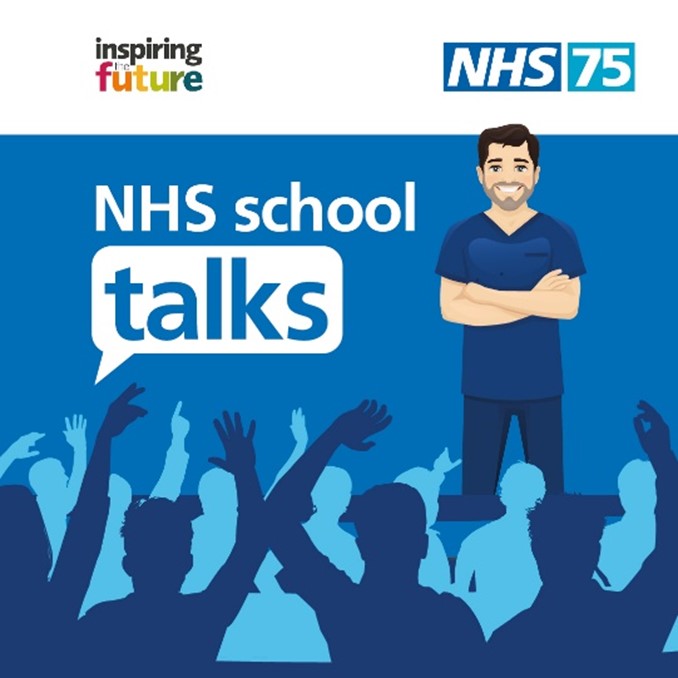 To help mark its 75th anniversary, the
To help mark its 75th anniversary, the  This July, NHS Charities Together are inviting the nation to come together and take part in the biggest NHS Big Tea ever to celebrate 75 years of our NHS.
This July, NHS Charities Together are inviting the nation to come together and take part in the biggest NHS Big Tea ever to celebrate 75 years of our NHS.  The
The 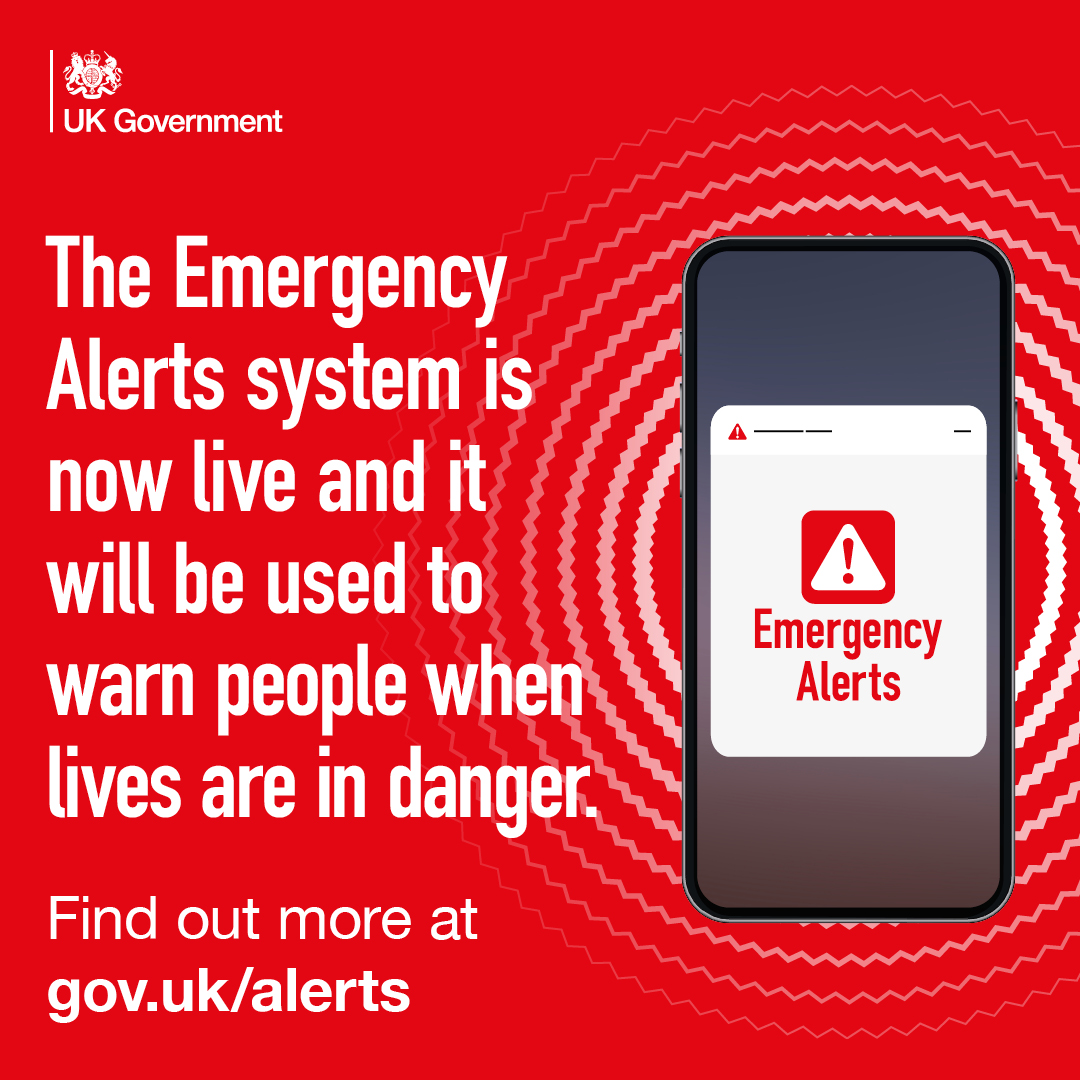 The UK government’s new Emergency Alerts system is now live. The system will enable people to be contacted via their mobile phone when lives are in danger. It will be used to warn you in the event of emergencies, such as severe flooding. The latest announcement by the government confirms that the system will be tested and an emergency sound will go off on nearly all smartphones at
The UK government’s new Emergency Alerts system is now live. The system will enable people to be contacted via their mobile phone when lives are in danger. It will be used to warn you in the event of emergencies, such as severe flooding. The latest announcement by the government confirms that the system will be tested and an emergency sound will go off on nearly all smartphones at  The Department for Culture, Media and Sport published guidance about how to watch the Coronation of Their Majesties King Charles III and Queen Camilla, which will take place on 6 May.
The Department for Culture, Media and Sport published guidance about how to watch the Coronation of Their Majesties King Charles III and Queen Camilla, which will take place on 6 May.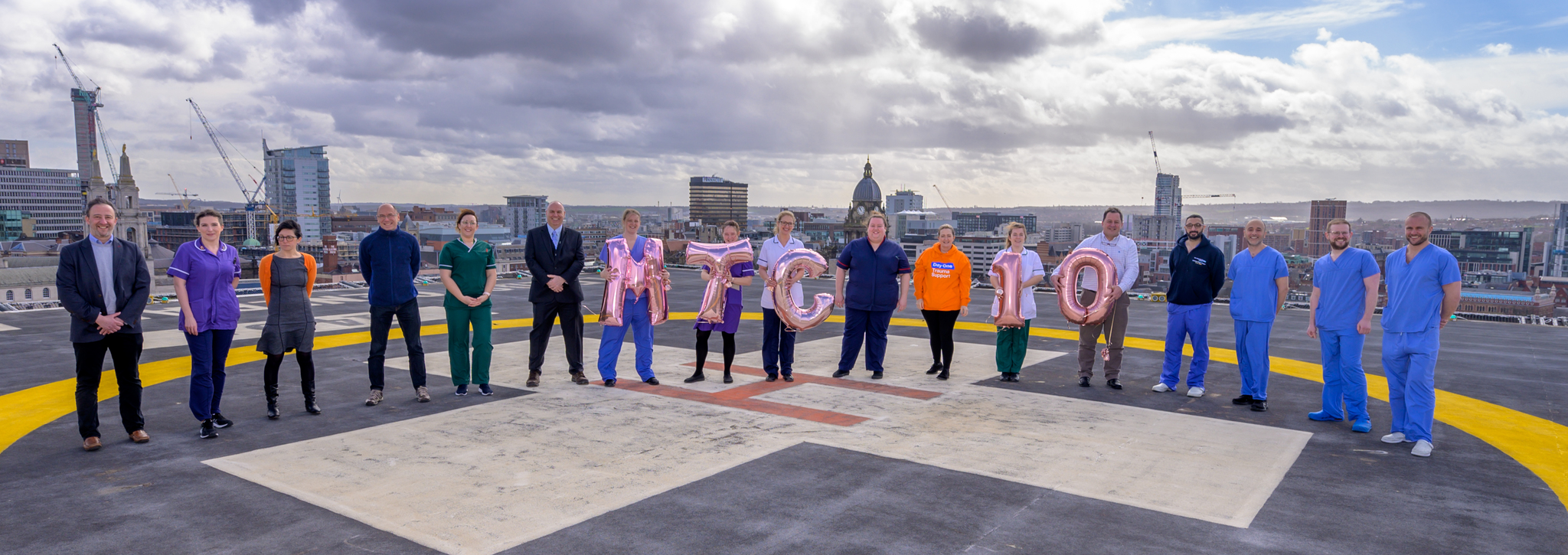
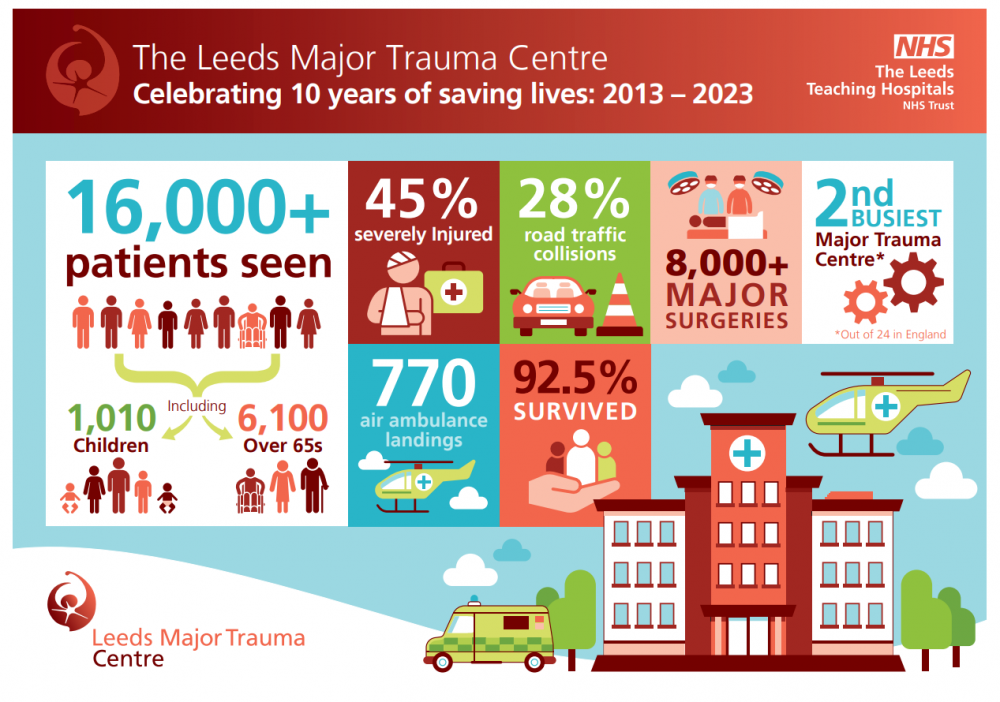
 The Fellowship is the Partnership’s award-winning leadership development programme aimed specifically at colleagues from ethnic minority backgrounds who are working within health and care. It was designed to help achieve our 10 big ambitions as a Partnership, as set out in our
The Fellowship is the Partnership’s award-winning leadership development programme aimed specifically at colleagues from ethnic minority backgrounds who are working within health and care. It was designed to help achieve our 10 big ambitions as a Partnership, as set out in our  There are 20 places available, and the programme is open to colleagues from ethnic minority backgrounds currently working in health and care organisations across West Yorkshire. This can include anyone working in NHS organisations, councils, Healthwatch, hospices, charities and the community, voluntary, and social enterprise sector. Those eligible for the programme will usually be looking to progress into their first leadership position.
There are 20 places available, and the programme is open to colleagues from ethnic minority backgrounds currently working in health and care organisations across West Yorkshire. This can include anyone working in NHS organisations, councils, Healthwatch, hospices, charities and the community, voluntary, and social enterprise sector. Those eligible for the programme will usually be looking to progress into their first leadership position.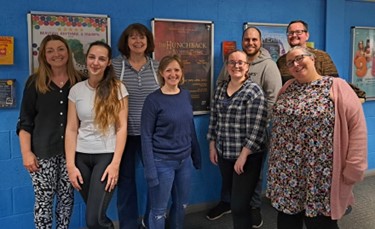 Eight members of the health, social care and VCS workforce in West Yorkshire are swapping their day jobs to tread the boards at the Carriageworks Theatre next week.
Eight members of the health, social care and VCS workforce in West Yorkshire are swapping their day jobs to tread the boards at the Carriageworks Theatre next week.